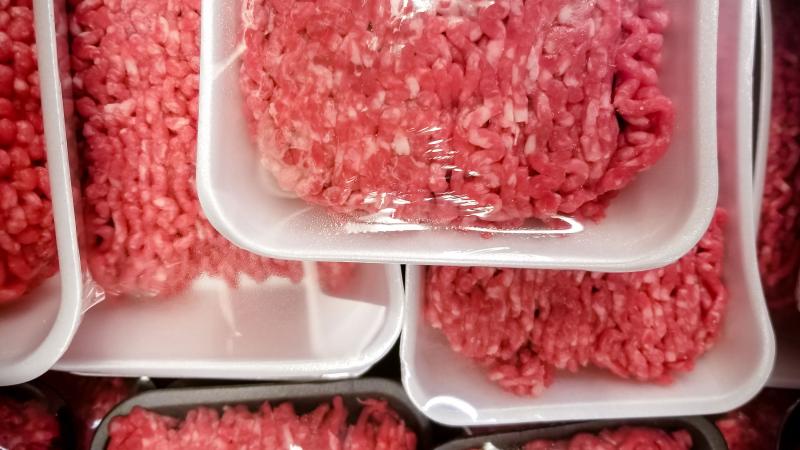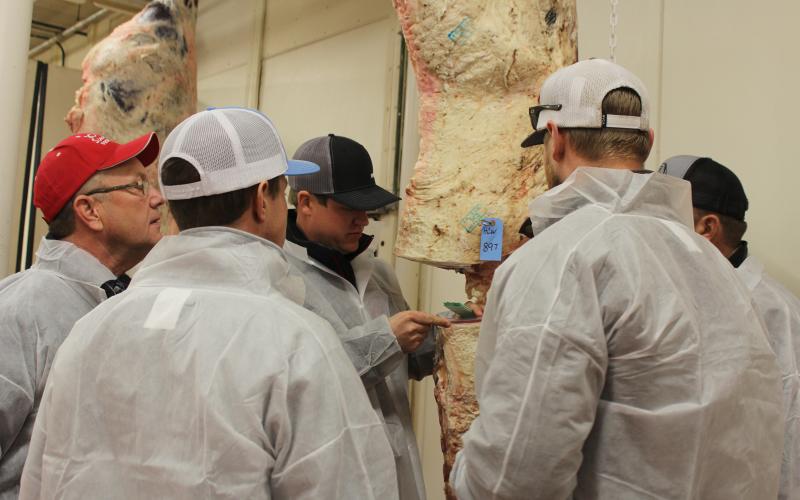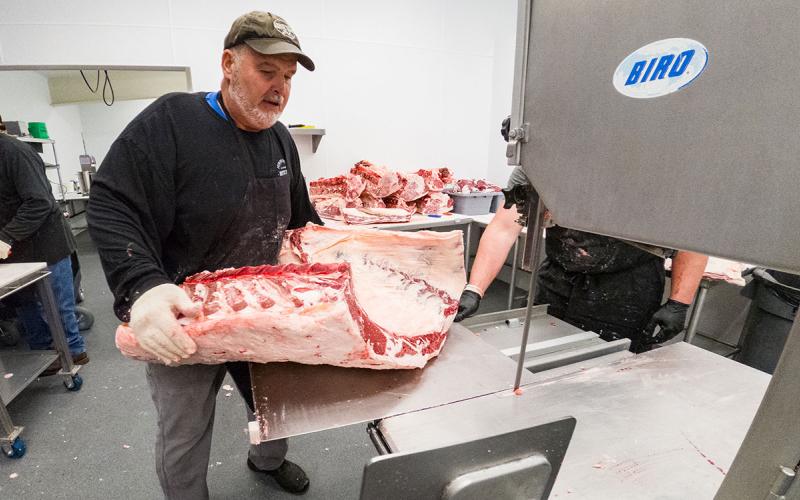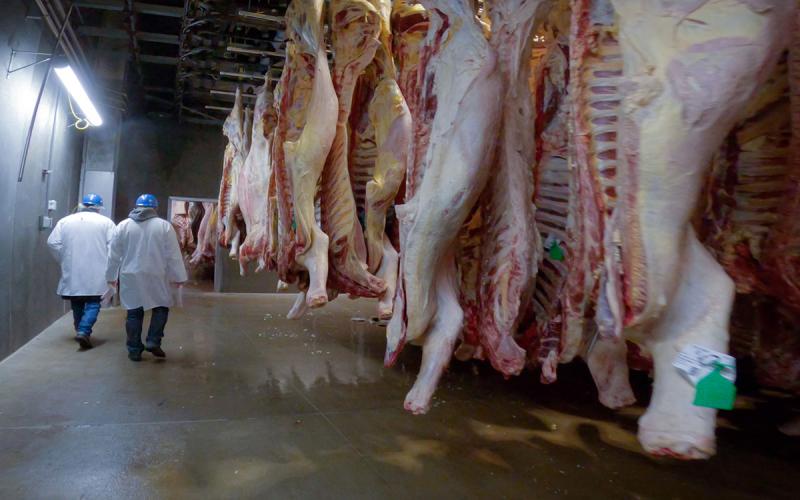
There is a picture circulating on social media with two samples of ground beef. One is a lighter red color and the other is darker. The accompanying post describes the lighter colored one as “store beef” and the one on the right is “farm beef.” The post goes on to claim several things that paint the store-bought beef in a negative light. Let’s dig into some of these claims.
Ground Beef: Claims vs. Facts
- Claim: Store-bought beef is pumped full of additives and water.
- Fact: The U.S. Department of Agriculture - Food Safety Inspection Service (abbreviated as USDA-FSIS) oversees meat, poultry, and some egg products. Additionally, USDA-FSIS also works with state meat and poultry inspection agencies to ensure continuity of standards between state and federal inspection. All meat inspection agencies must adhere to the Code of Federal Regulation (abbreviated as CFR). The CFR states “ground beef (or chopped beef) is made of fresh and/or frozen beef, with or without seasoning, and without the addition of beef fat. It cannot contain more than 30% fat or contain any added water, phosphates, binders, or extenders.” Products that do not follow the CFR would be recalled, and the plant responsible for maliciously not following the CFR would be subject to legal ramifications.
- Claim: Meat purchased from the store can be from other countries.
- Fact: This can be true. The United States imports beef from other countries to supplement the beef supply. According to the USDA Economic Research Service, as of June 2023, the year-to-date imports of beef and veal were just over 1.85 billion pounds. Why does the United States import beef for use in ground products? Because the U.S. supply cannot keep up with American demand for low-cost, lean ground beef. American beef producers can easily supply the steaks and high-value items demanded by our consumers. However, there are cuts that can fetch higher prices on the export market, such as short ribs, than what U.S. producers can make by turning them into ground beef. When those products are exported, we need to import lean beef trim to make up for the difference. All products brought into the United States must meet the same standards as U.S. product.
- Claim: The store-bought meat is made from scraps from multiple cows.
- Fact: Ground beef can be made from meat from multiple animals, but calling it scraps is misleading. Ground meat is made from a product that the industry calls trim or trimmings. Trim is generated for a variety of reasons. When a processor is cutting steaks, the ends of the piece of meat don’t always make nice-looking steaks and would be put into trim. Some parts of the carcass contain cuts of meat that are too tough for steaks. Grinding the meat will solve the tenderness issue, while also adding value to the product, as opposed to selling it as a roast. All carcasses produce at least some trim. In larger processing facilities, it is impossible to keep all the trim from one carcass together. In smaller processing facilities, or facilities that are custom harvesting, it is much easier do. However, is ground beef from one animal safer than ground beef produced from several animals? Nope. All beef is held to the same safety standards, and ground beef from inspected facilities is routinely tested for pathogens, like E. coli.
- Claim: Ground beef from the “farm raised beef” has more nutrients and flavor.
- Fact: There is no data to suggest that beef from a small meat processor is nutritionally different than meat purchased from larger processors. There is a possibility that the flavor can be different. The flavor of beef is very complex and influenced by many factors. For more information on these factors see the article, Why does beef from the store taste different than the beef from my local butcher?.
Differences in Appearance

So, why do the two samples of ground beef look different? There are several factors that can impact the appearance of ground beef.
- Fat content.
Ground beef can legally contain up to 30% fat. Ground beef that has more fat will appear to be lighter in color than product that has less fat. While ground beef from a larger processor will indicate how much fat is included, product from smaller processors may or may not include that information on the label, depending on the inspection category the meat was processed under. - Grind size or number of grinds.
When a product is ground, the lean and fat are dispersed more evenly throughout the batch. If a product is ground to a smaller size or ground more times, the fat is broken up even more. When white fat is more evenly distributed through red meat, the product gets lighter in color. - Packaging type.
The color of meat is heavily influenced by the presence of oxygen. Commonly, products purchased from larger processors are put in modified atmosphere packaging, so there is a blend of gas (nitrogen, oxygen, and carbon dioxide) in the package with the meat. The presence of those gases will allow the meat to be a bright-red color. Meat that is in tight plastic packaging, like tubes or chubs, will not be exposed to as much air and will not be that bright-red color right out of the package. However, if you allow that product to sit for a while after opening the package, it will brighten up. - The animal the ground beef came from.
Beef color can be impacted by several factors on the live animal side as well. Older animals and bulls have darker-colored meat than animals at the normal finishing age. The animal’s diet and dietary supplements can also make an impact. Finally, if an animal underwent a period of stress, like sickness, injury, excessive heat or cold, or recent estrus in females, there is a possibility that their meat will be darker as well.
Other Considerations
Another thing to remember is that all beef is farm-raised—some farms are just bigger than others. Meat processors still purchase cattle from cattle producers. In fact, many beef producers that sell beef direct to the consumer also sell their beef to the larger packers. The beef purchased from a grocery store could be from the same farm as meat that is marketed directly to consumers.
In the United States, the vast majority of consumers do not have access to small meat processors or farmers, but they still want to purchase beef and can only do so at grocery stores. They can (and should) do so with confidence because, regardless of where it is purchased or how it is processed, ground beef can be a safe and nutritious part of a balanced diet.
For more information on ground beef, view our fact sheet, Ground Beef Basics.
Resources
- 9 CFR 319.15(a). Code of Federal Regulations.
- USDA, Economic Research Service utilizing data from U.S. Department of Commerce, Bureau of the Census. Meat and livestock annual cumulative year-to-date U.S. trade. Accessed August 30, 2023.


